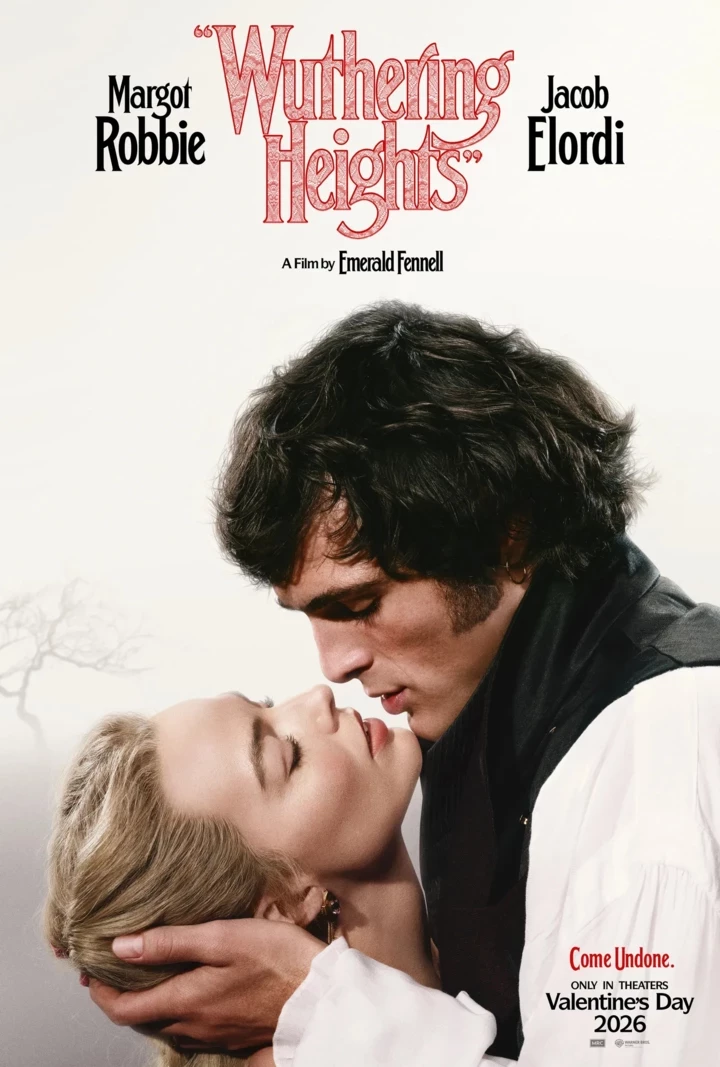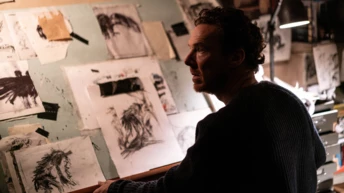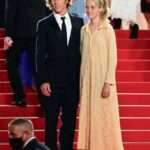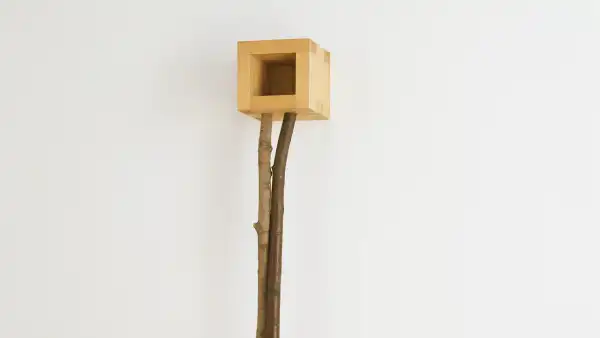
Save this storySave this storySave this storySave this story
Among the initial works noticed in “Nexus,” the Martin Puryear survey presently at the Museum of Fine Arts, in Boston, is a piece crafted in 1982, subsequent to most of his oeuvre being consumed by a studio blaze. “Sanctuary” comprises a petite pine container, exposed on one facet, resembling a birdhouse, perched ten feet high on a pair of lengthy, spindly limbs that intersect nearly where their ankles would be. At their nether extremes, the limbs conclude in two paw-esque feet affixed to the axis of a diminutive wheel, poised to be set in motion. It is all inert timber, yet those crossed appendages appear blithe, those fastened paws feel disquieting, and the pieced-together assurance of refuge and transport suggests improvisational thought.
“Sanctuary” serves as a prompt of Puryear’s artistic individuality. It represents a significant artwork of current times that appears to have emerged from a fable—not the simplified Disney variant, but the quirky, found-item variety amassed by the Brothers Grimm, where the lesson is indirect, anything might animate, and no one avoids unscathed. Having been born in 1941, Puryear matured during an epoch when sculpture asserted its dominance via formidable magnitude, conceptual exactitude, and protractor-impeccable geometries. (Consider Richard Serra, Nancy Holt, and Mark di Suvero.) Briefly, Puryear nearly appeared to align. In 1979, eight years after he attained his M.F.A. from Yale, the front of Artforum exhibited a portrait of his sculpture “Bask” (1976). A sliver of a sable circle bisecting the page, curved on one margin and rectilinear on the other, it might have been misinterpreted for an Ellsworth Kelly.
Encountered firsthand, however, “Bask” is less Kelly and more akin to a dormant seal: an extensive, earth-hugging crest of tinted timber, planked akin to a handmade canoe, and remarkably organic in sentiment. “Nexus” features an abundance of similarly graceful configurations that might superficially be labeled “minimalist” yet decline to truly embody minimalism. “Self” (1978), for instance, embodies the configuration of a sort of upright hillock ascending at one terminus. Identical to “Bask,” it is fashioned from a husk of dark timber, and up close one discerns how the principal mass is built from perpendicular staves, while its apex—amenably, at eye level—is capped with arranged horizontal rings. Viewed frontally, the entire entity appears to shrug slightly to the starboard.
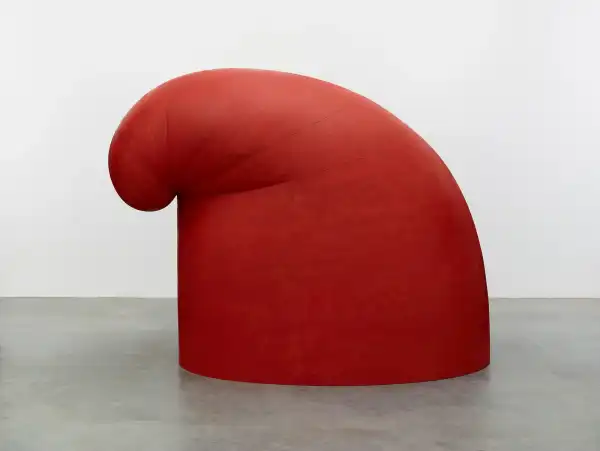
“Big Phrygian,” 2010-14.Art work by Martin Puryear / Courtesy the artist, Matthew Marks Gallery, the Glenstone Museum, and Museum of Fine Arts, Boston
It’s an artifact devoid of an entitlement to nonverbal communication, yet it embodies it. Furthermore, from nonverbal cues, an immediate transition to individuality ensues. Individuals reared alongside Tove Jansson’s Moomins might perceive within “Self” a nuance of the frigid and isolated Groke, lumbering through existence bearing those analogous undefined not-quite-shoulders, that same sensation of insulation from the sphere. Thus it unfolds: The sizable outrigger featured in “Lever #1” (1988-89) derives its title from an implement yet unequivocally evokes a swaying tail. A knee-level, cast-iron sculpture assembled from three ovoid forms is instantaneously identifiable as a falcon nested atop a boulder, simultaneously conjuring stillness and impending action. (Puryear is additionally a qualified falconer.)
In actuality, Puryear has consistently stood apart. Spanning sixty years, his artistic endeavors and career have transpired with reserved opposition towards precepts concerning the aesthetic, conduct, or creation of paramount art. Amidst an epoch that reveres outsourced manufacturing, he has invariably favored crafting items manually. He leveraged a tenure within the Peace Corps, situated in Sierra Leone, and a pair of years immersed in printmaking studies at the Swedish Royal Academy of Art to glean knowledge from indigenous carpenters, tool producers, and furniture artisans. At a juncture when diverting viewers’ consideration from confronting the tacit material presence of an abstract entity was deemed a deficiency, Puryear accommodated space for allusion. (The eight-foot inverted funnel constituting “Noblesse O.,” originating from 1987, can be appreciated as unadulterated form, yet it would be preposterous to refute its correspondence to the Tin Man’s head covering.) It is akin to a scenario wherein, at some juncture during the nineteen-sixties, Puryear surveyed the facets of human involvement being omitted from elite art, and resolved to welcome them all inward.
The exhibit’s denomination alludes to this receptiveness and intricacy, the manner in which, within any Puryear creation, one can discern several threads to pursue—the manifest allure of his shapes and substances; the ingenuity of his construction; the likenesses and references to nature, to history, and to a Black artist’s musings on Blackness and whiteness. All elements interrelate. “Nexus” further denotes the designation of a piece from 1979: a substantial, approximate-circular band of cedar that widens marginally where the two extremities—one painted jet and one painted pale—converge. A tracing from Puryear’s student period within Stockholm illustrates him presently practicing the mound contour that would recur in numerous later variations, herein composed of four clumpy segments—three inked in a speckled beige, one inked in jet—and captioned “Quadroon.” Within the directory, the curator Emily Liebert recounts the narrative of Puryear’s childhood brush with John James Audubon’s portrayals of a duo of gyrfalcons, one pale and one jet, the consequence of ecological adaptation. “I established a correlation concerning human racial divergence via these species,” Puryear articulated.
During his upbringing, Puryear yearned to function as a wildlife illustrator; throughout his collegiate years, he intended to concentrate in biology before transitioning towards art. Nature, encompassing its surfaces and intrinsic rationale, maintains a steadfast presence across this exposition. Plaque inscriptions specify the employed timbers—Alaskan yellow cedar, Swiss pear, lignum vitae—akin to designating a respected associate. At a more profound stratum, nature’s intrinsic mechanism of reiteration and transformation further embodies Puryear’s. Within sculptures, sketches, and imprints one can observe as the distinctive hump of “Quadroon” rectifies to transmute into “Self,” then stretches into something resembling a hunched ursine, subsequently elongating into something akin to a preening avian. During the twenty-tens, it distended and procured the distinguishing flopped configuration of a Phrygian cap—a sartorial symbol of liberty throughout both the American and French Revolutions.
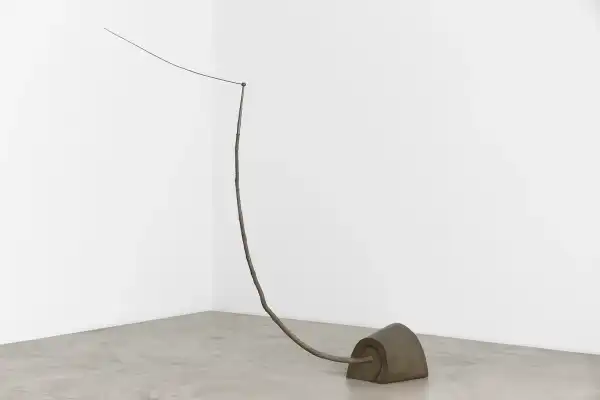
“The Way,” 2022.Art work by Martin Puryear / Courtesy the artist and Matthew Marks Gallery
The cap boasts esteemed high-art credentials: Delacroix might have neglected to furnish his “Liberty Leading the People” with footwear or a blouse, yet he bestowed upon her a Phrygian cap. It further constitutes the distinctive headwear of the Smurfs. Puryear’s “Big Phrygian” (2010-14)—vivid crimson and the dimension of a riding lawnmower—sustains both these legacies within purview, even as one’s focus is guided towards precisely how planks of red cedar can be configured to yield the mirage of immense pliable folds. Puryear possesses proficiencies as a woodworker, a printmaker, a draftsman, and furthermore as a falconer, yet his preeminent talent as an artist resides in his aptitude to retain all these components in operation concurrently.
He might conceivably be America’s foremost extant sculptor, and his attainments have scarcely evaded recognition—a MacArthur Fellowship during his forties, a MOMA retrospective during his sixties, the American pavilion at the Venice Biennale during his seventies. Nonetheless, he somehow persists in appearing undervalued. Perhaps it stems from his deliberate tempo, which implies a reduced volume of his art accessible to instigate consistent buzz; or perhaps it resides in his items’ meticulous construction, whereby the terminology “craft” might induce uneasiness among intellectual art enthusiasts; or perhaps it originates from his art’s pronounced resilience towards simplistic this-is-what-it’s-about elucidation.
This, admittedly, embodies the crux. Puryear refrains from being a dogmatic artist. The remarkable facet concerning his art transcends what it conveys; it concerns the manner in which it can assemble your consideration within a singular locus and reroute it elsewhere. It would prove inequitable to assert nothing precisely mirrors its outward guise, yet precise to declare that nothing solely embodies its outward semblance. One of the most captivating recent works featured within “Nexus” encompasses “The Way” (2022). Emanating from a stunted block shaped after a roofed wagon bereft of its casters, an extended sapling arcs approximately eight feet upwards into the atmosphere to furnish a perch for a slender rod directing forward (or conceivably backward, lacking a means of ascertainment). The inaugural rendition of the composition was conceived, akin to “Sanctuary,” from a scarecrow-esque assortment of constituents: a maple sapling, a willow sprig, a base of pine and curly maple. This entity, contrarily, exists as a bronze casting, bestowing its whimsical choreography with solemnity. Sticks and rocks may enact their inclinations, yet bronze partakes in the affairs of monuments. It conveys tidings to bygone and current eras, murmuring profound matters.
What assortment of matters? When immersed within a despondent disposition, one might envision “The Way” as “Sanctuary” ’s deplorable consequence—the casters have separated, the refuge has shuttered, the petitioner finds redirection elsewhere. Nevertheless, a facet concerning the work’s implausible balancing performance—the diminutive dowdy base exerting ample gravity to sustain the residue airborne—infuses dynamism into the surrounding atmosphere. Analogous to a toddler urgently designating something the adult sphere ceased perceiving extended ago, or perceiving the enchantment of, potency lies concealed within that insistent gesture, that demand for attentiveness. ♦
Sourse: newyorker.com



